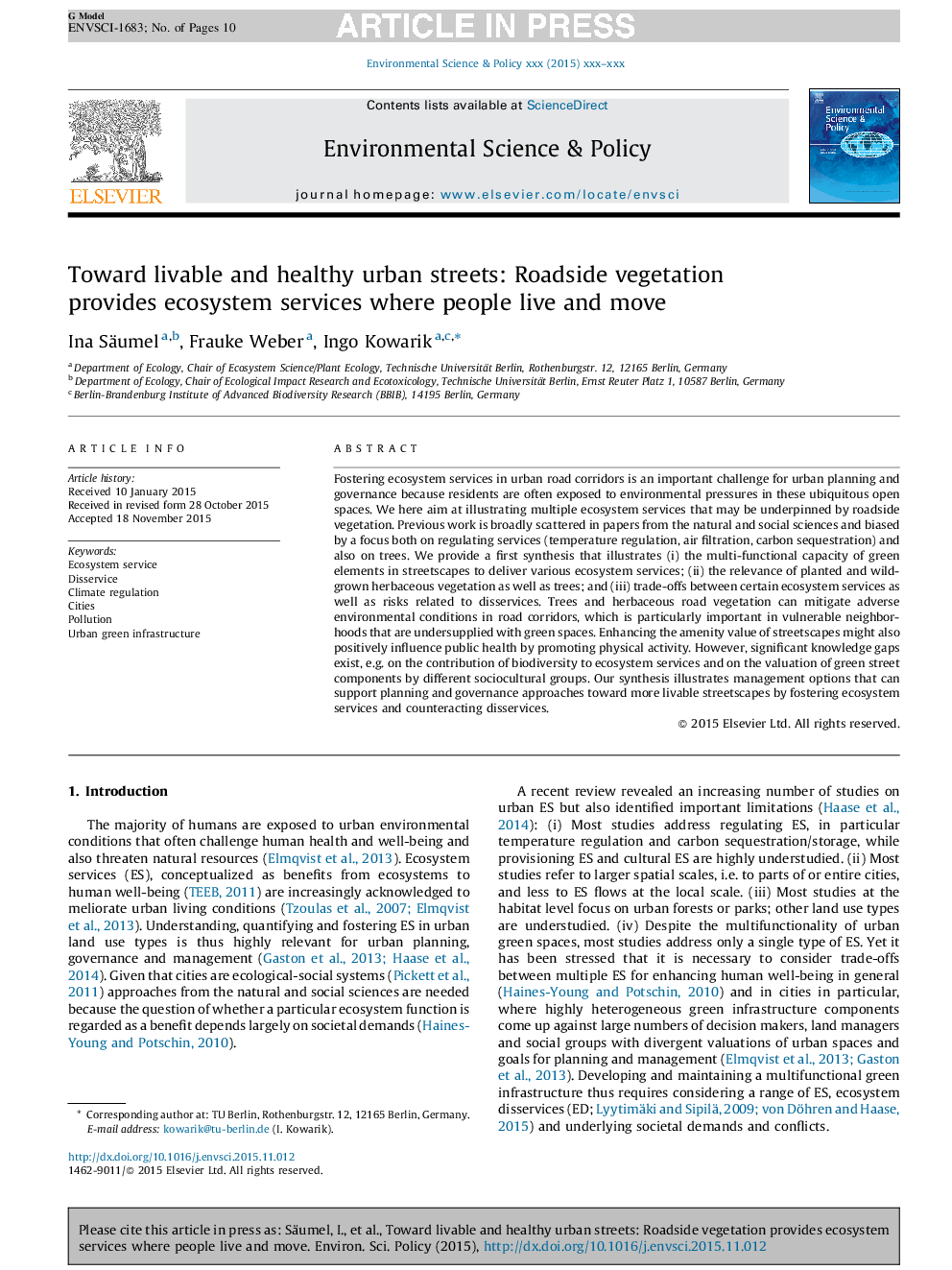| Article ID | Journal | Published Year | Pages | File Type |
|---|---|---|---|---|
| 7466768 | Environmental Science & Policy | 2016 | 10 Pages |
Abstract
Fostering ecosystem services in urban road corridors is an important challenge for urban planning and governance because residents are often exposed to environmental pressures in these ubiquitous open spaces. We here aim at illustrating multiple ecosystem services that may be underpinned by roadside vegetation. Previous work is broadly scattered in papers from the natural and social sciences and biased by a focus both on regulating services (temperature regulation, air filtration, carbon sequestration) and also on trees. We provide a first synthesis that illustrates (i) the multi-functional capacity of green elements in streetscapes to deliver various ecosystem services; (ii) the relevance of planted and wild-grown herbaceous vegetation as well as trees; and (iii) trade-offs between certain ecosystem services as well as risks related to disservices. Trees and herbaceous road vegetation can mitigate adverse environmental conditions in road corridors, which is particularly important in vulnerable neighborhoods that are undersupplied with green spaces. Enhancing the amenity value of streetscapes might also positively influence public health by promoting physical activity. However, significant knowledge gaps exist, e.g. on the contribution of biodiversity to ecosystem services and on the valuation of green street components by different sociocultural groups. Our synthesis illustrates management options that can support planning and governance approaches toward more livable streetscapes by fostering ecosystem services and counteracting disservices.
Related Topics
Physical Sciences and Engineering
Energy
Renewable Energy, Sustainability and the Environment
Authors
Ina Säumel, Frauke Weber, Ingo Kowarik,
